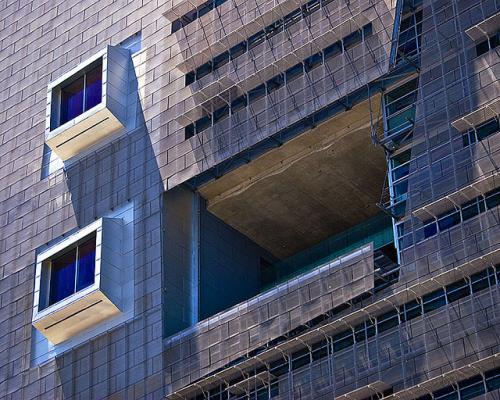
The LEED Silver San Francisco Federal Building set a standard for green construction in the city [Photo Credit: flickr user Oldvidhead]
Green building regulations are nothing new. For over a decade, cities have taken the lead in the adoption of green building standards. States have been slower to follow suit, but at present 35 states have adopted green building ordinances that either outline policies to encourage green construction or require green construction for state-owned and state-funded buildings. However, on January 1 California will become the first state to enact a mandatory, state-wide green building code applicable to both private and public development.
It’s difficult to overstate the significance of a mandatory green building standard for the entire state. State policies to date have created exceptional green buildings that effectively raise the ceiling for green building. By setting minimum standards, California is doing something equally important: raising the minimum floor.
The widespread application of basic green building practices to all buildings, not just the high profile, pioneering buildings, is crucial to curbing energy use and reducing resource consumption. Nationally, buildings consume 39% of the United States’ energy and account for 38% of the country’s carbon dioxide emissions. The new California Green Building Standards Code, or CALGreen, is a step in the right direction; according to estimates by the California Air Resources Board, the new standards will reduce greenhouse gas emissions by 3 million metric tons by the year 2020. (That’s the equivalent of removing 573,000 cars from the road, or burning nearly 7 million barrels of oil.)
Like most green building standards, CALGreen addresses a wide variety of sustainable practices ranging from water conservation to energy efficiency to indoor air quality. Unlike many ordinances to date, however, it does not reference a third party standard (for example, requiring certain buildings to obtain a LEED or GreenPoint rating). Instead, the requirements are written directly into the building code and will be enforced by local jurisdictions as part of their plan review and building inspection processes already in place.
The new code means different things for different local jurisdictions. San Francisco already has one of the most progressive green building ordinance s in the country, so the new state code will not result in a radical departure from current practice. Indeed, when it first passed January, the CALGreen code garnered some criticism from environmental groups worried that it would stifle more progressive regulations in cities like San Francisco and Los Angeles. The code does allow local jurisdictions flexibility to go beyond its basic requirements, either by adopting one of CALGreen’s two optional tiers of more stringent regulations, or by implementing a more restrictive standard of their own, such as a third party standard. However, the statewide regulations will have the greatest impact in jurisdictions that do not already have green building requirements.
With the new code, California has affirmed that healthy, efficient buildings should not be the exception but the norm. By placing the green building code alongside other building codes that deal with structural and fire safety regulations, California’s policymakers are asserting that, like building for earthquake safety, building to minimum green standards is simply the right way to build.